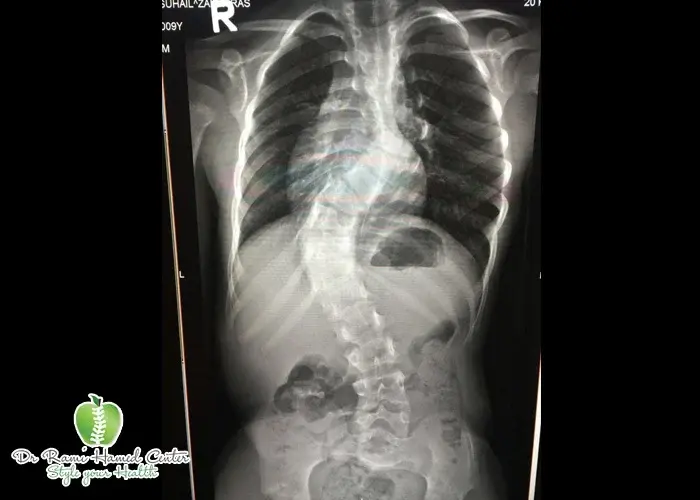Spondylolysis & Spondylolisthesis at DRHC Dubai Back Pain Clinic
Spondylolysis and spondylolisthesis are two closely related spinal conditions that can lead to spinal instability, back pain, and mobility issues. At DRHC Dubai, our multidisciplinary spine care team offers comprehensive diagnosis and personalised treatment plans to restore stability, alleviate pain, and enhance quality of life.
What is Spondylolysis?
Spondylolysis is a stress fracture or defect in the pars interarticularis, a small segment of bone that connects vertebrae in the spine. This condition most often occurs in the lower back (lumbar spine) and is common among athletes involved in sports that require repetitive spinal movements, such as gymnastics or weightlifting.
- Cause: Spondylolysis usually develops from repetitive stress on the spine, resulting in small cracks or fractures in the vertebrae.
- Risk Factors: Athletes, adolescents, and individuals with genetic predisposition are at a higher risk.
While some cases are asymptomatic, others may lead to persistent lower back pain, especially during activity. If the fracture weakens the vertebra enough, it can cause a vertebra to slip out of place, resulting in spondylolisthesis.
What is Spondylolisthesis?
Spondylolisthesis occurs when one vertebra slips forward over the vertebra below it, causing spinal instability. It can result from untreated spondylolysis or develop due to age-related degeneration, trauma, or congenital factors. This condition can lead to pain, nerve compression, and reduced mobility.
Types of Spondylolisthesis:
- Isthmic: Occurs when a stress fracture leads to slippage.
- Degenerative: Caused by age-related changes and disc degeneration.
- Traumatic: Resulting from sudden injury to the spine.
- Congenital: Due to a defect present from birth.
Symptoms of Spondylolysis & Spondylolisthesis
The symptoms of these conditions can vary depending on the severity of the instability and nerve involvement.
- Lower back pain, especially after activity or prolonged standing.
- Stiffness or tightness in the back and hamstrings.
- Pain radiating down the buttocks or legs (sciatica).
- Numbness, tingling, or weakness in the legs due to nerve compression.
- Loss of flexibility and difficulty bending or twisting.
- Increased sway in posture or difficulty walking in advanced cases.
Diagnosing Spondylolysis & Spondylolisthesis at DRHC Dubai
Our specialists at DRHC Dubai use state-of-the-art diagnostic tools to assess the spine’s condition and determine the appropriate course of treatment.
- X-rays: Identify fractures, slippage, and changes in spinal alignment.
- MRI (Magnetic Resonance Imaging): Provides detailed imaging of the soft tissues and any nerve involvement.
- CT Scan: Detects small fractures in the pars interarticularis that might not appear on X-rays.
- Electromyography (EMG): Evaluates nerve function and identifies compression-related issues.
Treatment Options for Spondylolysis & Spondylolisthesis at DRHC Dubai
The treatment for spondylolysis and spondylolisthesis depends on the severity of symptoms, the degree of vertebral slippage, and the patient’s overall health. At DRHC Dubai, we offer both conservative and surgical solutions to ensure optimal outcomes.
1. Non-Surgical Treatments
Most cases of spondylolysis and mild spondylolisthesis can be managed without surgery.
- Medications: Pain relievers and anti-inflammatory drugs to reduce discomfort.
- Physiotherapy: Exercises to strengthen the core and back muscles, improving spinal stability.
- Bracing: Temporary use of a back brace to support the spine and limit movement during healing.
- Epidural Steroid Injections: Reduce inflammation and relieve nerve pain caused by compression.
- Lifestyle Modifications: Advice on posture correction, activity modification, and ergonomic support.
2. Surgical Treatments
Surgery may be required for severe cases where significant vertebral slippage occurs, or if nerve compression leads to neurological symptoms such as weakness or loss of bladder control.
- Spinal Fusion: Involves fusing two or more vertebrae to stabilize the spine and prevent further slippage.
- Laminectomy: Removes part of the vertebra to relieve pressure on the spinal cord or nerves.
- Minimally Invasive Spine Surgery: Smaller incisions and advanced tools ensure quicker recovery and less post-operative pain.
- Vertebral Reduction Surgery: Restores the vertebra to its normal position and stabilizes the spine.




.png?width=281&height=59&name=bookanappointment%20(1).png)






